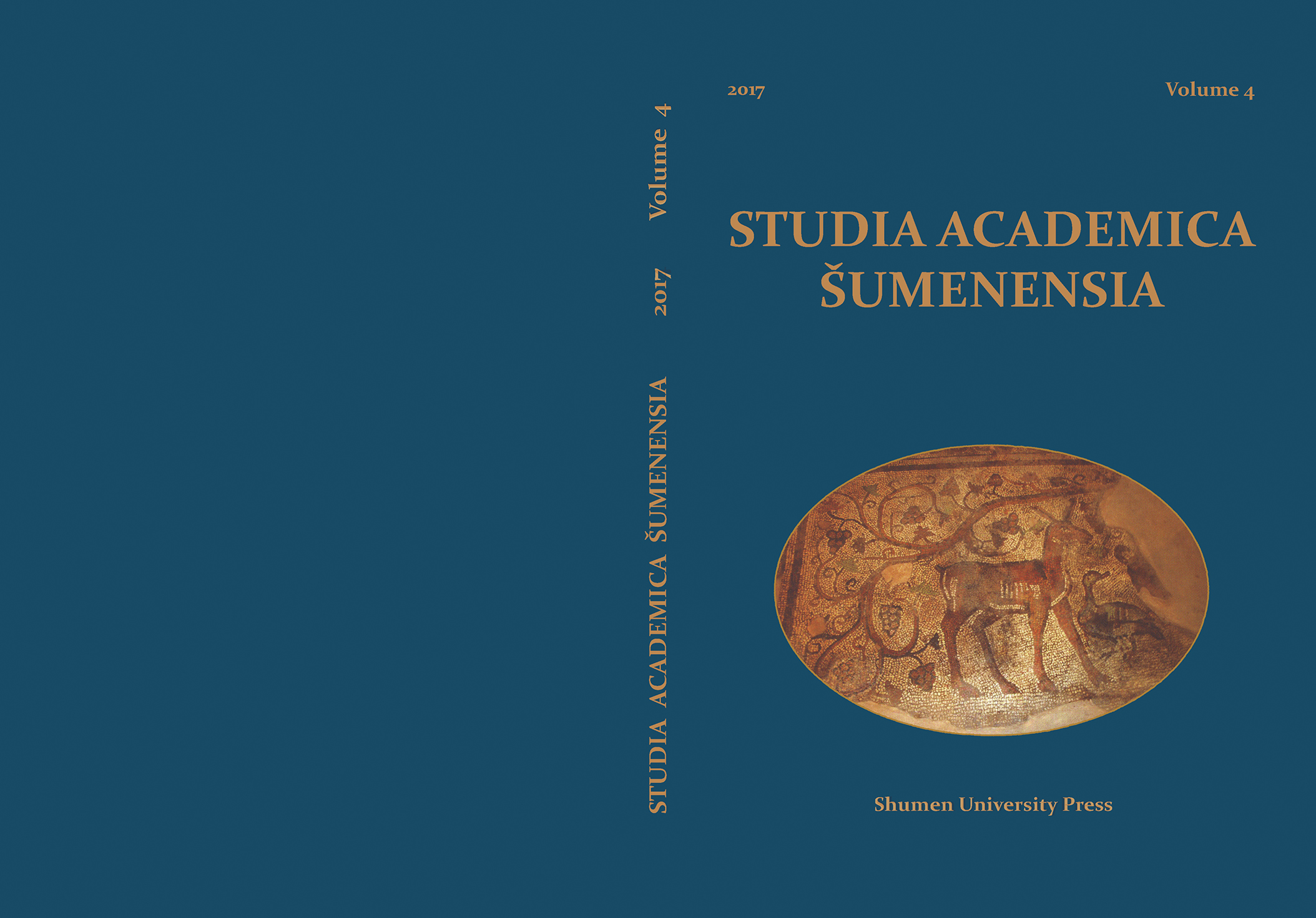The ‘Edicts of Tolerance’ in the Early 4th Century: Debates and Possible Solutions
The ‘Edicts of Tolerance’ in the Early 4th Century: Debates and Possible Solutions
Author(s): Dimitar Yordanov DimitrovSubject(s): History, Geography, Regional studies, Historical Geography, Ancient World, Theology and Religion, History of Religion
Published by: Шуменски университет »Епископ Константин Преславски«
Keywords: Late Roman Empire; Christianization; religious policy; persecution; religious tolerance; the edict of Galerius; the edict of Milan; Constantine the Great
Summary/Abstract: The article is dedicated to the religious policy of the Roman emperors inthe early 4th century and the legal texts issued in that connection. My main task, running outof any excessive ambition, is to reconsider again the events and texts in order to demonstratehow they fully fi t to the logic of the contemporary politics and to the mentality of the age, distancing them from any legends, created in later centuries. The legal texts, known as theEdict of Galerius and Edict of Milan, are presented in their full and discussed. Accordingly, theproblems of the religious identity are involved, making some mandatory elucidation of howreligion was accepted and what was to be Christian at that time. Concerning the much debated ‘Edict of Milan’, what we have as a text, at least in the version of Lactantius, is a, quite probably,mandatum of Licinius promulgated in June 313 in Nicomedia and directed openly against the restoration of persecutions by Maximinus Daia. The other text, translated from Latin into Greekand given to us by Eusebius, is a variant of that text with the role of Constantine stressed, but without any other clues to confi rm an overall legal text edited in Milan in the early 313. Finally, the role of Constantine was observed, including the ‘white’ and ‘black’ legends created later. The article is dedicated to the religious policy of the Roman emperors in the early 4th century and the legal texts issued in that connection. My main task, running out of any excessive ambition, is to reconsider again the events and texts in order to demonstrate how they fully fi t to the logic of the contemporary politics and to the mentality of the age, distancing them from any legends, created in later centuries. The legal texts, known as theEdict of Galerius and Edict of Milan, are presented in their full and discussed. Accordingly, theproblems of the religious identity are involved, making some mandatory elucidation of howreligion was accepted and what was to be Christian at that time. Concerning the much debated ‘Edict of Milan’, what we have as a text, at least in the version of Lactantius, is a, quite probably, mandatum of Licinius promulgated in June 313 in Nicomedia and directed openly against the restoration of persecutions by Maximinus Daia. The other text, translated from Latin into Greek and given to us by Eusebius, is a variant of that text with the role of Constantine stressed, but without any other clues to confirm an overall legal text edited in Milan in the early 313. Finally, the role of Constantine was observed, including the ‘white’ and ‘black’ legends created later.The article is dedicated to the religious policy of the Roman emperors in the early 4th century and the legal texts issued in that connection. My main task, running out of any excessive ambition, is to reconsider again the events and texts in order to demonstrate how they fully fi t to the logic of the contemporary politics and to the mentality of the age, distancing them from any legends, created in later centuries. The legal texts, known as the Edict of Galerius and Edict of Milan, are presented in their full and discussed. Accordingly, the problems of the religious identity are involved, making some mandatory elucidation of how religion was accepted and what was to be Christian at that time. Concerning the much debated ‘Edict of Milan’, what we have as a text, at least in the version of Lactantius, is a, quite probably, mandatum of Licinius promulgated in June 313 in Nicomedia and directed openly against the restoration of persecutions by Maximinus Daia. The other text, translated from Latin into Greek and given to us by Eusebius, is a variant of that text with the role of Constantine stressed, but without any other clues to confirm an overall legal text edited in Milan in the early 313. Finally, the role of Constantine was observed, including the ‘white’ and ‘black’ legends created later.
Journal: Studia Academica Šumenensia
- Issue Year: 4/2017
- Issue No: 4
- Page Range: 23-39
- Page Count: 17
- Language: English

